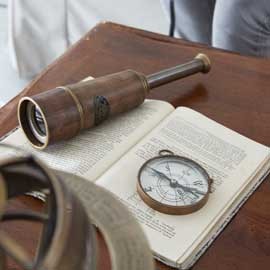Please wait!
We are processing.
Can not login without email!
Please check your account and give me the permission to use your email.
Can not login!
Please contact us or try to login with another way.
Successful!
Thanks for logging in

Nautical and maritime instruments play a crucial role in sea navigation. They include a wide range of devices such as sextants, navigational compasses, depth finders, nautical charts and radios. These instruments allow captains and sailors to plot their course, measure water depth, identify locations, and communicate with other ships or shore stations.
The development of these instruments has significantly improved the safety and efficiency of maritime navigation. Modern technology has helped make these instruments more accurate and easier to use. However, a basic knowledge of the use of traditional nautical instruments is still important, as they can serve as a backup when modern technology fails. In general, nautical and marine instruments are essential tools for navigating the world's oceans and waters.